Paul Bogaers is a master of ambiguity.
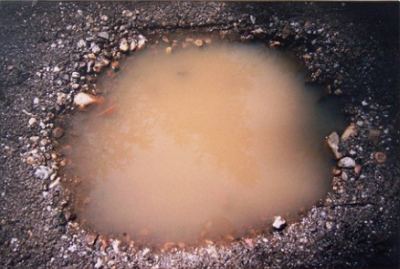
Regina Hackett takes her Art to Go
Paul Bogaers is a master of ambiguity.

Land(s)cape at Soil. Featuring Julie Albert, Lise Graham and Cable Griffith.
Beloved by grade-school art teachers, cut-out paper on paper collage can easily be overworked and inert, especially the way Alpert makes them, which is stuffed to the gills. And yet, hers work. It’s easy to see the ghost of Romare Bearden in her rough-hewed shapes. She’s going for similar territory too, the crumbling walls and make-do repairs of a rundown urban core.
She hasn’t hitched her wagon to his star, however. His tonalities are dark and tightly orchestrated. Hers have a wider range, with a little zing of wild thing.
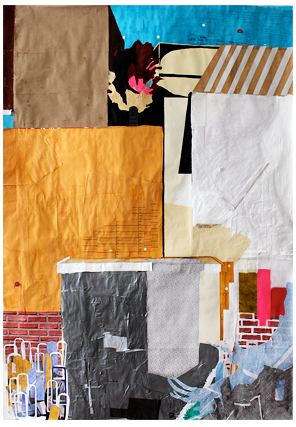 If Graham had created the world, buildings would be able to lift themselves off their foundations to dance. They’d settle back without missing a beat or cracking the skulls of their occupants.
If Graham had created the world, buildings would be able to lift themselves off their foundations to dance. They’d settle back without missing a beat or cracking the skulls of their occupants.
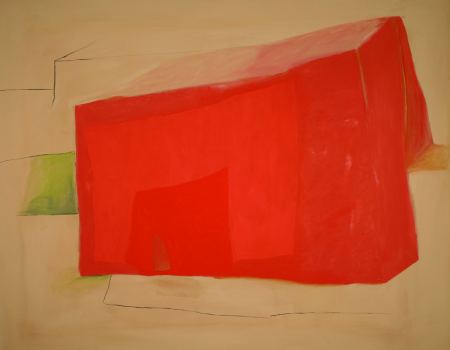 Griffith is a pattern painter aspiring to volume. If he painted heads instead of landscapes, he’d give them crew cuts. As his shapes hug the ground, their pastel shades, like yeast in dough, attempt to rise.
Griffith is a pattern painter aspiring to volume. If he painted heads instead of landscapes, he’d give them crew cuts. As his shapes hug the ground, their pastel shades, like yeast in dough, attempt to rise.
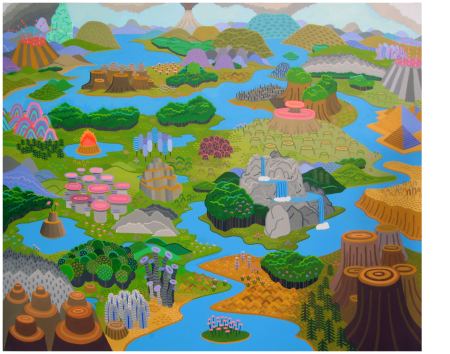 Fullness Passing, Patricia Hagen at Punch Gallery through Saturday.
Fullness Passing, Patricia Hagen at Punch Gallery through Saturday.
Hagen is interested not in ripeness but what follows it, after the baby’s been fed, the seed has dropped from the pod and the cut flowers have begun to droop in the vase.
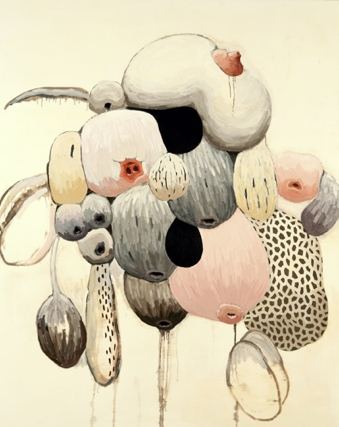 Witness, David French at Linda Hodges.
Witness, David French at Linda Hodges.
French’s sculptures remind me of keepsakes, something broken off and saved to be passed down from mother to daughter, a moment of youth long gone.
 Carrie Marill and Robert Yoder at Howard House.
Carrie Marill and Robert Yoder at Howard House.
(Yoder reviewed here. ) Marrill’s men at work: They’re too busy to notice that they’re already gone.
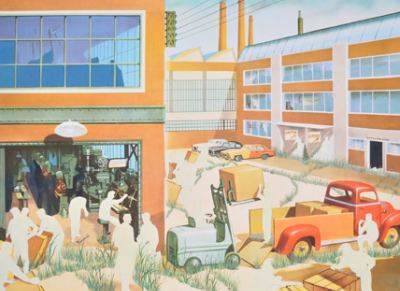
During a drought in Orange County in the 1990s, there were wide dead
lawns spray-painted green and signs nailed to trees saying, “Armed
Response.” Some people were pretty successful with their faux-nature
plots, but others upped the yellow and threw in a bit of neon for a
probably unintentional Flash-Gordon-on-the-moon look. Nearly 20 years
later, the latter is the shade increasingly showing up in landscapes.
(Alice Wheeler, Homeless Camp, Seattle)
 Barney Kulok, Crescent Street, Queens, New York
Barney Kulok, Crescent Street, Queens, New York
 Ezra Johnson, still from The Time of Tall Statues
Ezra Johnson, still from The Time of Tall Statues
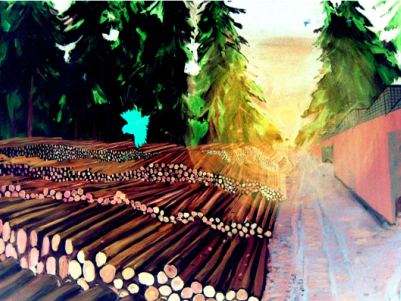 Elizabeth Sandvig, Landscape in Spring with Owl
Elizabeth Sandvig, Landscape in Spring with Owl
Thy lips are like a thread of scarlet, and thy speech is comely: thy temples are like a piece of a pomegranate within thy locks.
Song of Solomon
Artists threading the scarlet tend to color within the lines.
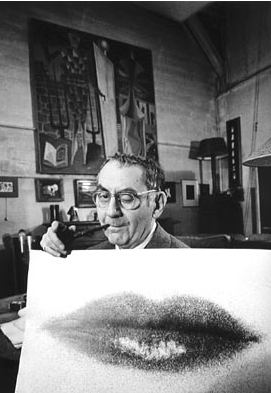 Man Ray again
Man Ray again
 And again, when his favorite erogenous zone became weather.
And again, when his favorite erogenous zone became weather.
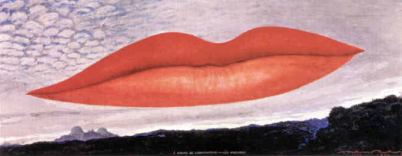 When we’re talking about erogenous, however, nobody beats Marilyn Minter’s Green Pink Caviar, trailer below and on the link.
When we’re talking about erogenous, however, nobody beats Marilyn Minter’s Green Pink Caviar, trailer below and on the link.
For coloring outside the lines, credit goes first to Irving Penn, 1986, …
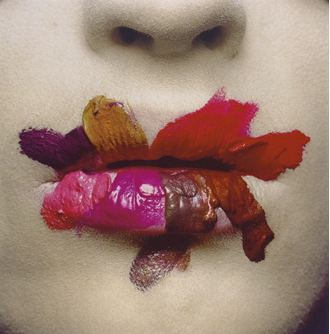 and second to Ariana Page Russell, whose photos of her flushed and/or painted body are amazing.
and second to Ariana Page Russell, whose photos of her flushed and/or painted body are amazing.
In response to this post, about a traffic-sign-subverted chair by Amy Pruzan, Ries Niemi wrote:
Sorry, I just can’t let this one slide- this chair is an almost direct
copy, right down to bends, shapes, and construction techniques, of the
chairs that my friend (and I say that because I am honored he calls me
a friend) Boris Bally has been making for close to 15 years now.Boris has been making all kinds of objects from street signs for longer than Amy Pruzan has been out of 9th grade. Ms. Pruzan may be a great artist, and other works of hers superb- I don’t know. But I do know this one is a knockoff.
No, Ries, I don’t think you can know that. It’s possible Pruzan thought of the idea on her own and proceeded without knowing about Bally’s production. Yes, Bally was first and remains best, but I think there’s room for Pruzan. I still like the skinny legs of her chair. They undercut the massive utterance of her seat.
Bally:
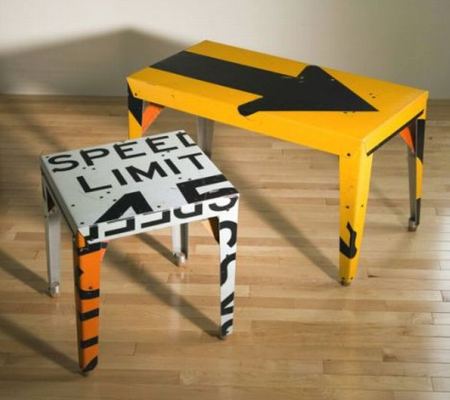 Bally:
Bally:
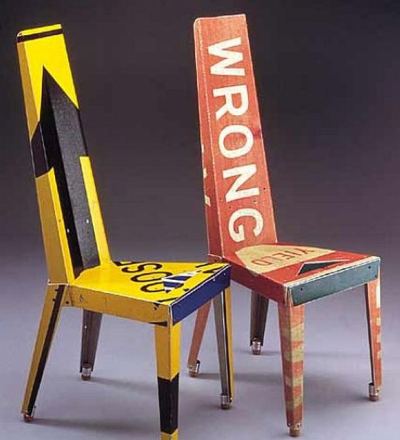 Pruzan:
Pruzan:
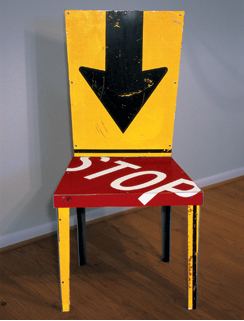
According to the BBC, two-thirds of all transplanted organs in China come from executed prisoners.
Remember Bodies…The Exhibition? When it was in Seattle in 2006, a PI reporter, gazing at a flayed corpse, noted that no one knew his individual identity.
What is known is that he was from China, and when he died his body went
unclaimed — unclaimed, that is, until the dissectors at a Chinese
university took him into their care and the show’s promoters took him
on the road.
What is known? Sorry, Charlie. How the government got hold of these bodies is not known. When it’s an exhibition of corpses out of China, all bets are off. If these corpses just happened to die from unnamed causes, it’s lucky for the show’s promoters that so many young and fit keel over in China’s streets. The old and infirm wouldn’t look nearly as good in the spotlight.
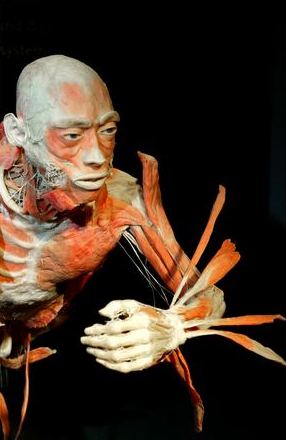
Experiences vibrating on the same frequency tend to fuse. Below, the mystical, mad end of 21st-century Medievalism.
The heart has its reasons which reason does not know. Pascal

A few years ago, Seattle’s Robert Zverina papered the floor, ceiling
and walls of a small space with snapshots of his life. Walking inside was
like walking into Zverina’s brain and looking around.
It was a great place to be. For Zverina, reality is an exalted state. Because he focuses his praises of it with the deceptively casual force of his economy, he makes videos the way John Ashbery Ashberry writes poems: free associating within a theme, one image suggesting a variation on the next.
Six of his three-minute pocket videos here, funded by 4Culture. Below, three-mind minute Bird. The blackouts serve as line breaks.
Leeman, via My Love for You is a Stampede of Horses, a fabulous face.
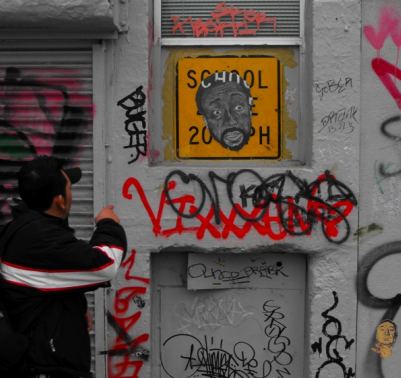
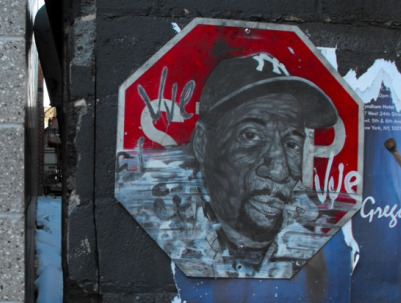
Amy Pruzan: Signs stripped of their authority and distorted into service.

an ArtsJournal blog


